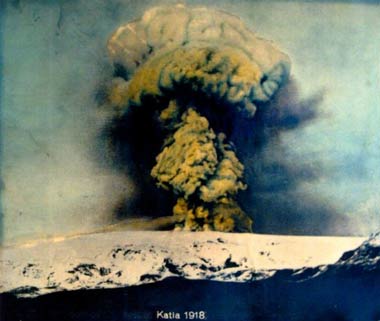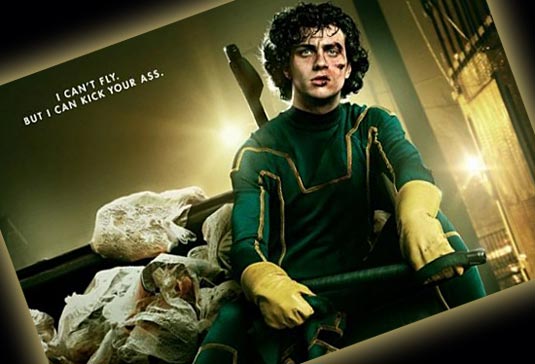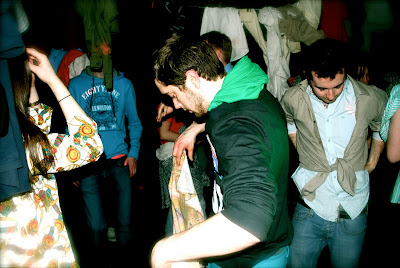As you may or may not know, a volcano erupted in southern Iceland last week, near Eyjafjallajökull glacier. Between 500 and 600 people were evacuated from the immediate area, and flights in and out of the Keflavík airport were suspended. Glacial flooding was the biggest initial threat, but it appears that the lava from the volcano has avoided the ice for the most part and is flowing through a gorge. The eruption is ongoing and experts have no knowing of when it will stop.
Still, there is a growing concern that the volcanic activity could trigger a much larger explosion in Katla, known as one of the most dangerous volcanoes in Iceland, embedded deep under Mýrdalsjökull glacier, which is the second largest glacier in the country. Katla erupts once or twice a century, with devastating results. When Katla explodes, it melts ice. Melted ice is water. Water means floods. At the peak of an eruption in 1755, the flood discharge was estimated between 200,000–400,000 m³/s; for comparison the combined average discharge of the Amazon, Mississippi, Nile, and Yangtze rivers is about 290,000 m³/s. That's kind of insane, right? Aside from flooding, the volcanic material thrown up by the eruption is highly conductive, leading to massive lightening storms. Add to this toxic gases and clouds of ash, and you've got a party on your hands.
Katla 1918 eruption:

During my brief stint in Iceland last summer, I stayed in Þórsmörk valley. The valley is bordered on three sides by glaciers, one of which is Eyjafjallajökull, and at the rear lies Mýrdalsjökull. I've hiked in the foothills of both of them. This is why the current volcanic eruption resonates with me more than most. It's odd to think that the next time I go back there, the landscape could be entirely different. I was told during my stay that an eruption was due, since the last one occurred in 1918. Many of the older residents of the area refused to believe this, or, if they did believe, were not perturbed by it. Þórsmörk, as well as Hella, Hvölsvollur, and Fljotshlíd have all been evacuated, and are all places I've been in. It's bizarre.
Húsadalur campsite where I lived for 2 weeks, with Eyjafjallajökull in the distance:
Even though the majority of Iceland's 320,000 strong population live in Reykjavík, there is still a bustling community in and around Þórsmörk. If there was a flood, hundreds of people would lose their homes. An eruption in the 21st century would have a far greater effect compared to 100 years ago. In 1996, a smaller eruption occurred under the Grimsvötn lakes belonging to the Vatnajökull glacier. The resulting flood washed away part of the main highway which circumnavigates Iceland. Repairs to bridges and roads cost 2 billion Icelanic kronor. An eruption in Katla would be far far worse than the Grimsvötn one, causing untold amounts of damage. And with Iceland already in economic collapse, it would be detrimental to the country.


























